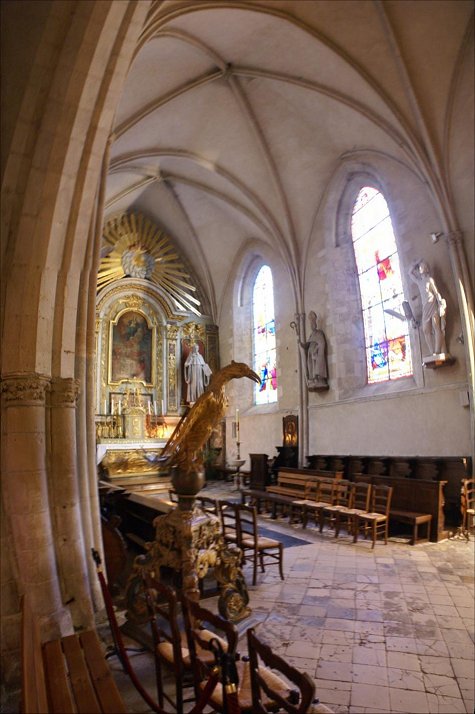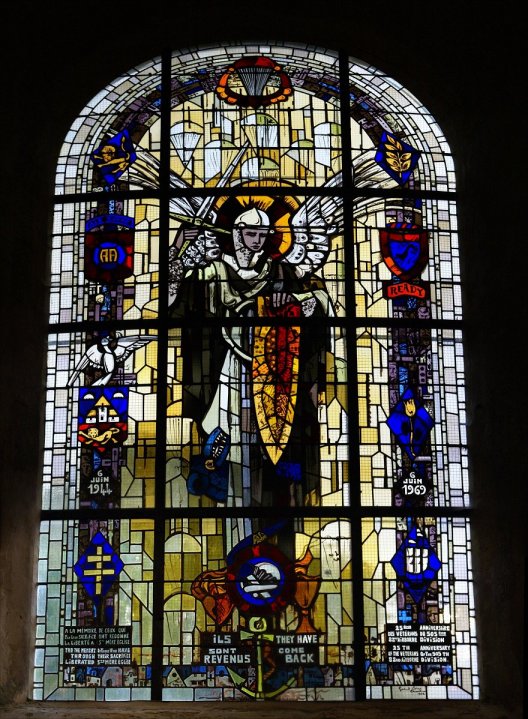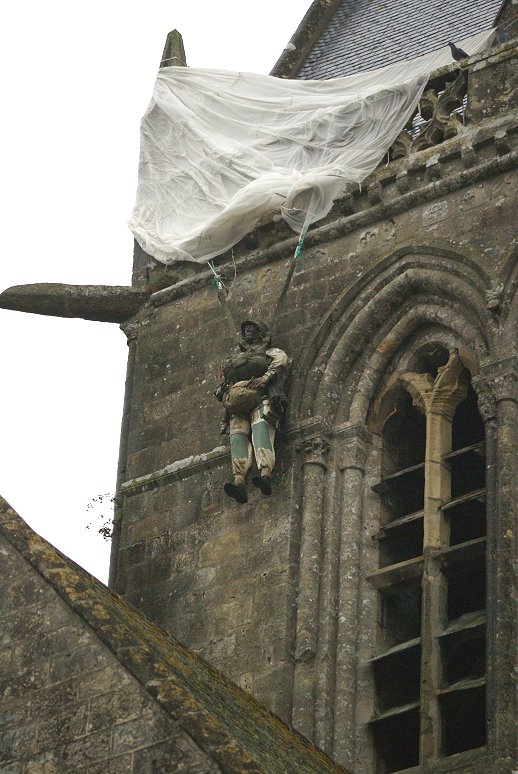
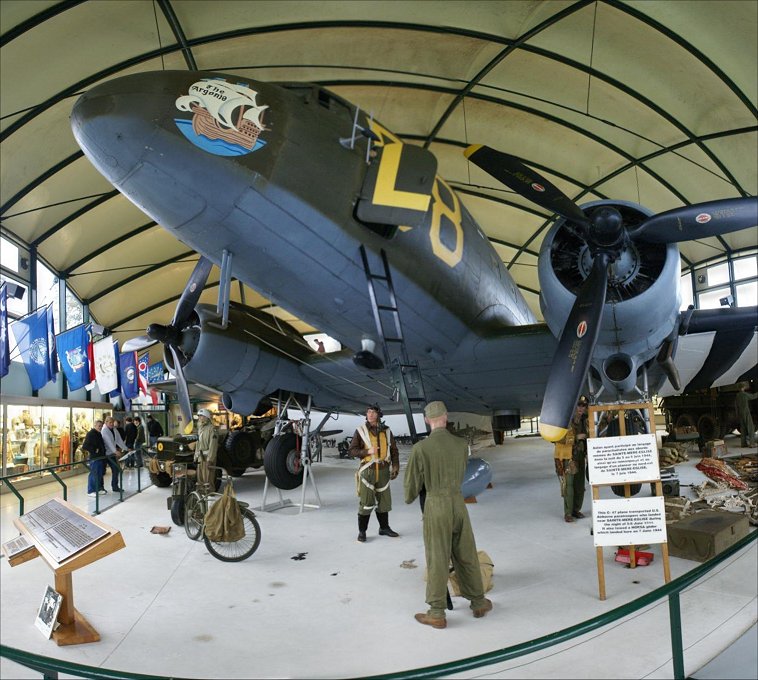

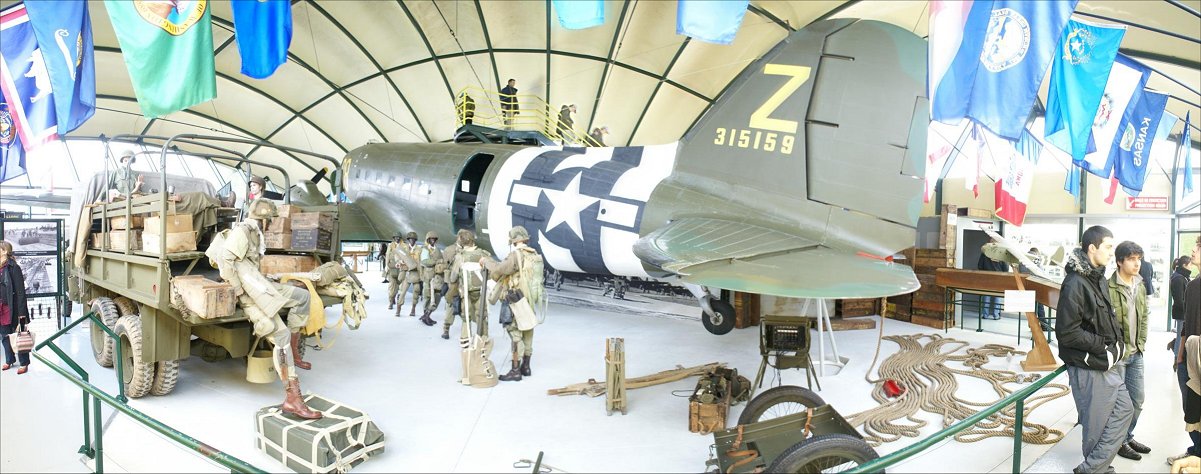
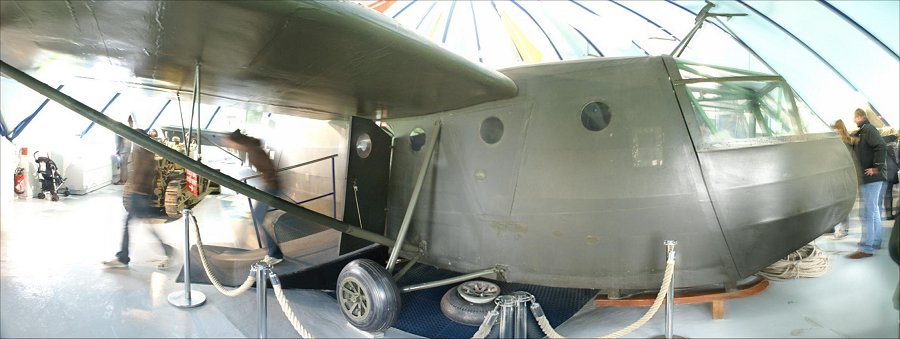
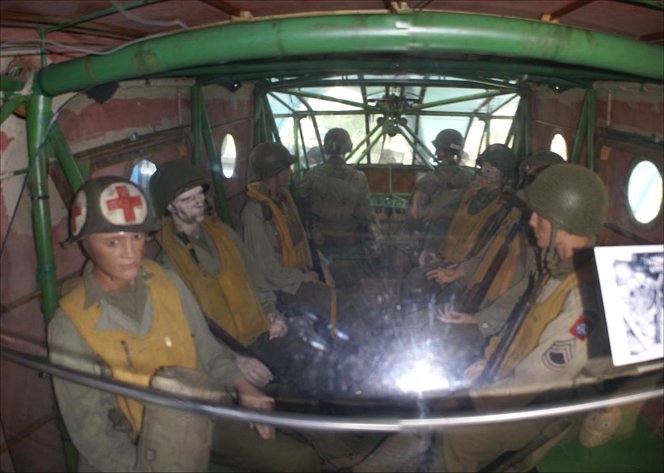
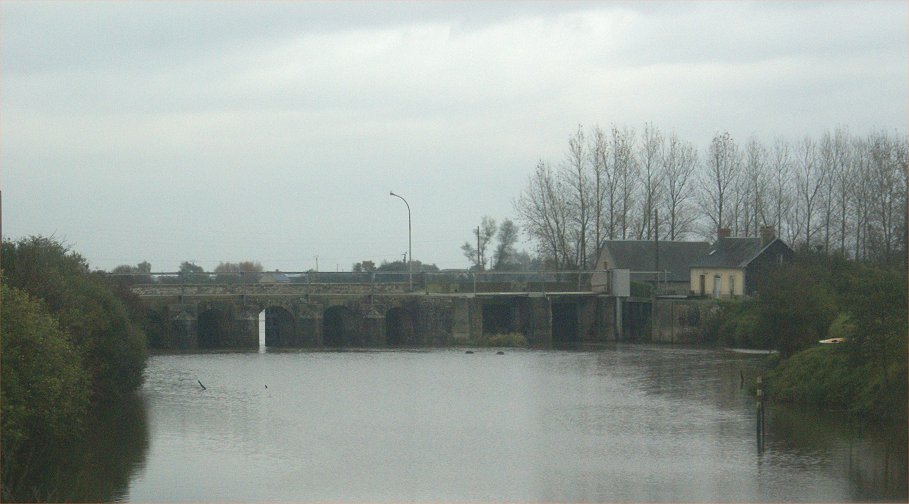

| That night, due to either Allied bombing or from a flare used by the Pathfinders, a house in St Mere Eglise caught on fire. In the photo above, the house was near the flagpoles above the black automobile, now the site of the Airborne Museum. Locals formed a bucket brigade to fight the fire but were sent back to their homes when the Germans saw parachutists. One paratrooper, Pvt John Steele, was caught in the church steeple. He was wounded in the foot, but survived by playing dead as fighting raged in the town square below him. Today, if weather and season permits, an effigy of Steele can be seen on the church. |  |
